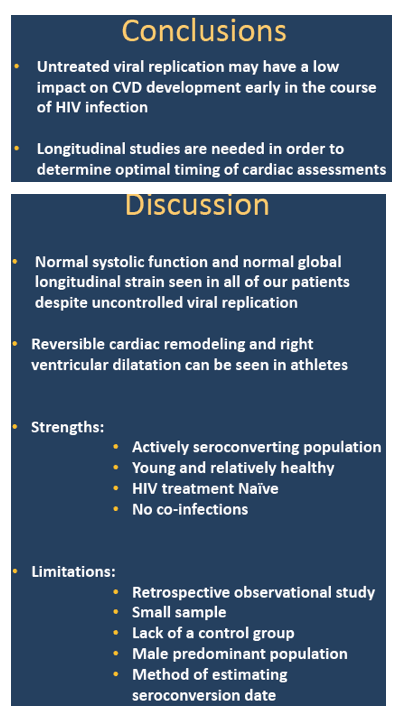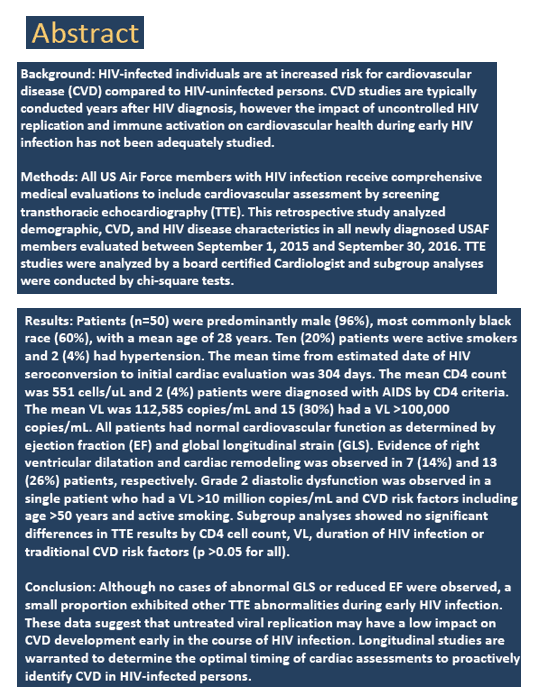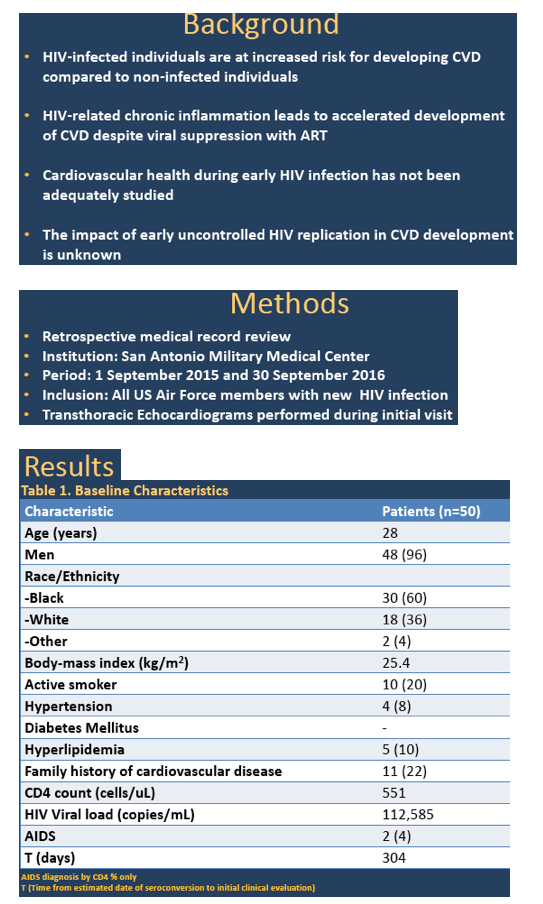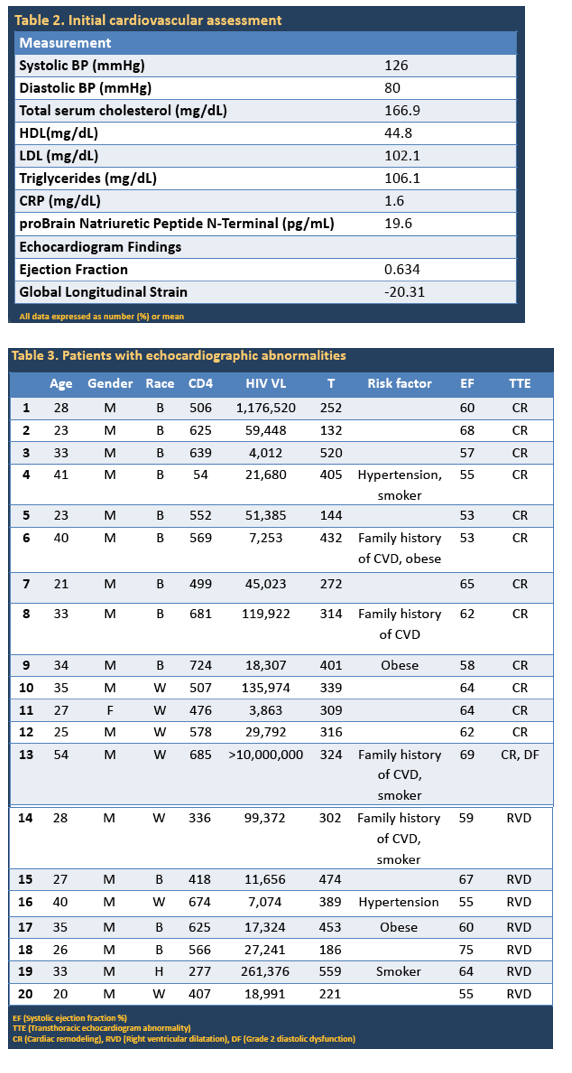 |
 |
 |
| |
Echocardiography Spots Abnormalities in up to
26% of Air Force Members With Early HIV
|
| |
| |
IDWeek2017/IDSA, October 4-8, 2017, San Diego
Mark Mascolini
Routine transthoracic echocardiography in 50 US Air Force (USAF) members recently diagnosed with HIV infection found evidence of right ventricular dysfunction in 14% and cardiac remodeling in 26% [1]. But everyone had normal cardiovascular function as assessed by ejection fraction and global longitudinal strain (deformation).
People with HIV infection run an increased risk of cardiovascular disease. Abundant research links HIV-related chronic inflammation to cardiovascular disease, even in people with well-controlled HIV infection. But most work on cardiovascular risk with HIV involves people with long-standing infection. Researchers who conducted the USAF study noted that the impact of early HIV infection on cardiovascular risk remains poorly understood.
Everyone in the USAF diagnosed with HIV infection undergoes screening transthoracic echocardiography as part of their workup. Thus researchers at the San Antonio Military Medical Center could assess echocardiographic parameters in USAF members recently infected with HIV.
The analysis involved 50 people evaluated between September 1, 2015 and September 30, 2016. Forty-eight (96%) were men, 60% black, and 36% white. An average 304 days had elapsed since the estimated data of HIV seroconversion. Age averaged 28 years. Ten people (20%) were active smokers, 4 (8%) had hypertension, 5 (10%) had hyperlipidemia, and 11 (22%) had a family history of cardiovascular disease. CD4 count averaged 551, but 2 people had AIDS by CD4 criteria. Viral load averaged 112,585 copies (30% above 100,000 copies).
Echocardiography showed that all study participants had normal cardiovascular function as determined by ejection fraction and global longitudinal strain. But the scans showed evidence of right ventricular dysfunction in 7 people (14%) and cardiac remodeling in 13 (26%). A single person had grade 2 diastolic dysfunction. This 54-year-old man, a smoker with a family history of heart disease, had a CD4 count of 685 but a viral load topping 10 million copies.
The researchers noted that some otherwise healthy athletes have reversible cardiac remodeling and ventricular dilatation. The 12 men and 1 woman in their group with cardiac remodeling ranged in age from 21 to 54 (median 33); the 7 men with right ventricular dysfunction ranged in age from 20 to 40 (median 28).
Because echocardiography disclosed few cardiac abnormalities, the investigators proposed that "untreated viral replication may have a low impact on cardiovascular disease development early in the course of HIV infection." They called for longitudinal studies to figure the best time for cardiac assessments in people with early HIV infection.
Reference
1. Alvarado G, Usry C, Gore R, Watts J, Okulicz J. Echocardiographic assessment of US Air Force members with Early HIV infection. IDWeek2017/IDSA. October 4-8, 2017. San Diego. Abstract 578.

Echocardiographic Assessment of US Air Force Members with Early HIV Infection
Gadiel Alvarado, DO1, Courtney Usry, DO2, Rosco Gore, MD2, James Watts, MD2 and Jason Okulicz, MD1, (1)Infectious Disease, San Antonio Military Medical Center, Fort Sam Houston, TX, (2)Cardiology, San Antonio Military Medical Center, Fort Sam Houston, TX




|
| |
|
 |
 |
|
|